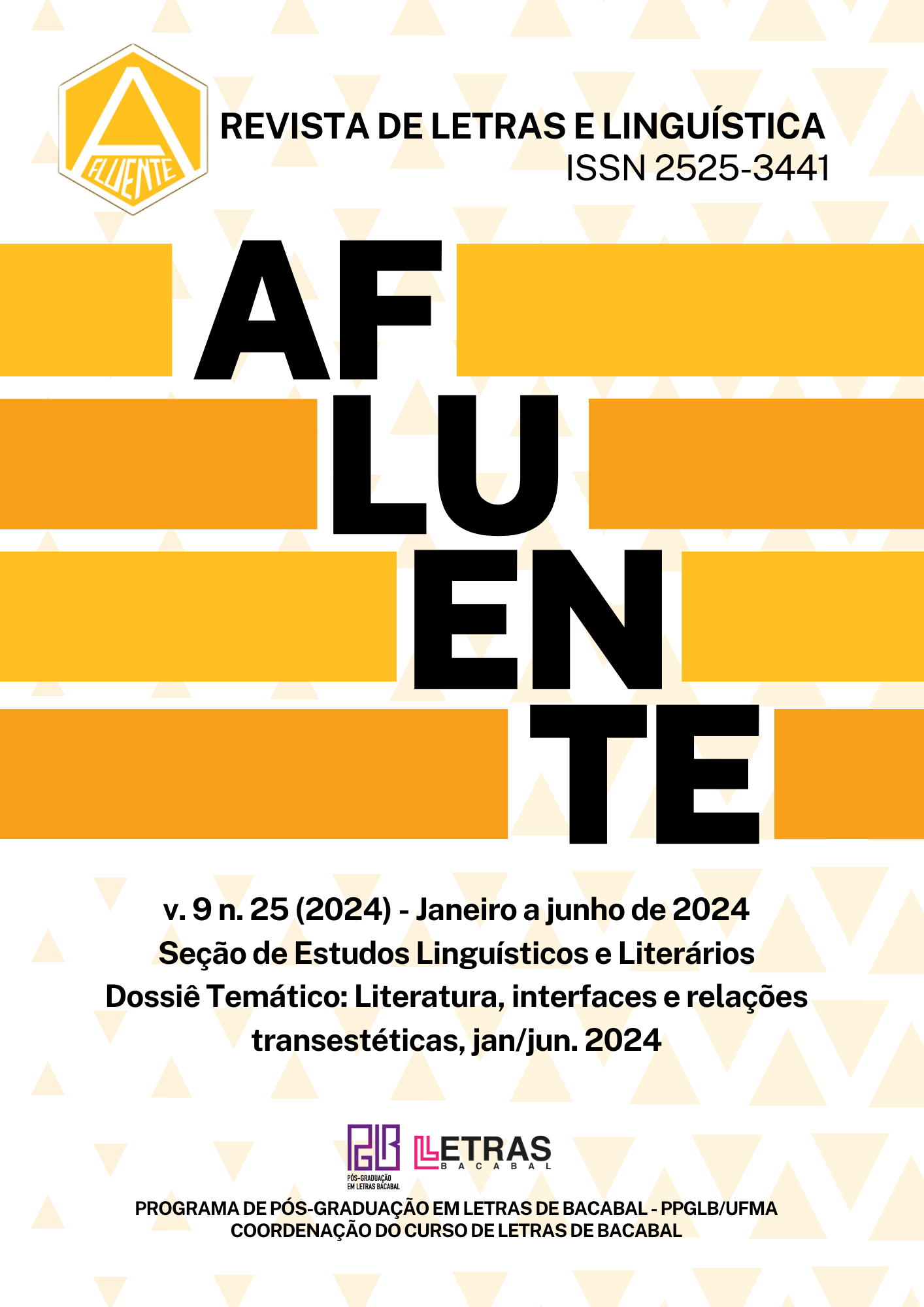Pedra bonita and cangaceiros narrator settings
DOI:
https://doi.org/10.18764/2525-3441v9n25.2024.13Keywords:
José Lins do Rego, Pedra Bonita, Cangaceiros, NarratorAbstract
José Lins do Rego published Pedra Bonita and Cangaceiros in 1938 and 1953, respectively. Set at different moments in the history of Brazilian literature and the country's economic development, the novels have significant aesthetic differences, even if one is a continuation of the other in thematic terms. One of these differences, although it also constitutes a continuity in its own way, is the configuration of the narrator: Cangaceiros radicalizes the discretion and almost disappearance of the narrative voice. This article intends to reflect on these and other characters of the voices that narrate this story. The method of sociological interpretation, practiced, for example, by Antonio Candido. guides this interpretation of the novels. In the end, we propose the understanding that the narrative voice is erased by the material forces and conditions that involve the logic of the semi-feudal economic structure practiced in the Northeast between the end of the 19th century and the beginning of the 20th century. In this sense, the Regian novel internalizes, in its structure, the current social structure.
Downloads
References
ADORNO, T. W. Notas de literatura I. 2. ed. São Paulo: Duas Cidades, Editora 34, 2012.
BAKHTIN, M. Teoria do Romance I: A estilística. 1. ed. São Paulo: Editora 34, 2015.
BENJAMIN, W. O narrador: considerações sobre a obra de Nikolai Leskov. Magia e técnica, arte e política: ensaios sobre literatura e história da cultura. São Paulo: Brasiliense, 1994, p. 197-221.
CAMARANO, Ana. Amélia.; ABRAMOVAY, Ricardo. Êxodo rural, envelhecimento e masculinização no Brasil: panorama dos últimos cinquenta anos. Revista Brasileira de Estudos de População, Rio de Janeiro: Associação Brasileira de Estudos Populacionais, v. 15, n. 2, p. 45-66, jul./dez. 1998.
CANDIDO, A. Crítica e sociologia. In. Literatura e sociedade: estudos de teoria e história literária. 8. ed. São Paulo: T. A. Queiroz, 2000.
COUTINHO, A.; COUTINHO, E. F. A literatura no Brasil. 7. ed. São Paulo: Global, 2004.
FACÓ, R. Cangaceiros e fanáticos. 8. ed. Rio de Janeiro: Bertrand Brasil, 1988.
FRIEDMAN, N. O ponto de vista na ficção: o desenvolvimento de um conceito. Revista USP, São Paulo, n. 53, p. 166-182, março/maio 2002.
GENETTE, G. O discurso da narrativa. Tradução: Fernando Cabral Martins. 3. ed. Lisboa: Veja, 1995.
LAFETÁ, J. L. 1930: a crítica e o modernismo. São Paulo: Duas Cidades; Ed. 34, 2009.
LUKÁCS, G. A teoria do romance. 34. ed. São Paulo: Duas cidades, 2000.
PEREGRINO JR. Língua e estilo de José Lins do Rego. In. COUTINHO, Eduardo F.; CASTRO, Angela Bezerra (Org.); José Lins do Rego. Rio de Janeiro: Editora Civilização Brasileira, 1991.
REGO, J. L. Cangaceiros. 14. ed. Rio de Janeiro: José Olympio, 2010.
REGO, J. L. Pedra Bonita. 15. ed. Rio de Janeiro: José Olympio, 2011.
RÓNAI, P. Pedra Bonita. In. COUTINHO, Eduardo F.; CASTRO, Angela Bezerra (Org.). José Lins do Rego. Rio de Janeiro: Editora Civilização Brasileira, 1991.
SCHWARCZ, L. M.; STARLING, H. M. Brasil: uma biografia. 2. ed. São Paulo: Companhia das Letras, 2018.
Downloads
Published
How to Cite
Issue
Section
License
Copyright (c) 2024 Afluente: Revista de Letras e Linguística

This work is licensed under a Creative Commons Attribution 4.0 International License.
Direitos autorais Afluente: Revista Eletrônica de Letras e Linguística
Este trabalho está licenciado com uma Licença Creative Commons - Atribuição 4.0 Internacional.















